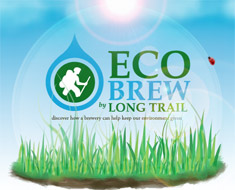Welcome to the obligatory St. Patrick’s Day post.
(Not to be a curmudgeon — Ireland, Irish-Americans, Irish pubs in Ireland, Irish-inspired pubs in America, Irish beers, Irish-inspired beers, St. Patrick’s Day parades . . . are all good things. But do we really need a drinks company passing around petitions to make it a national holiday?)
Anyway, let’s get it out of the way comfortably before the main event. And by following a growing crowd writing about “green beer, no not that green beer, but the environmentally friendly stuff.”
Start with Slate’s “Eco-guide to responsible drinking,” a stunningly complex investigation of glass versus cans. It reminds me of The New Yorker’s look at carbon emmissions (“It’s easy to confuse morality and science.”) a few weeks ago. In the first case, there’s more to the equation than weight. In the latter, there’s more to a carbon footprint than coming up a label for everything you buy at the grocery store.
It’s far easier to understand what these three breweries are doing:
 Long Trail Brewing in Vermont: They’ve even set up ECOBREW as a separate website. Serious stuff, from the heat recovery program to using biodegradable cups for outdoor events. Best factoid, though, is that most breweries use six gallons of water to produce one gallon of beer. Long Trail has that down to 2:1.
Long Trail Brewing in Vermont: They’ve even set up ECOBREW as a separate website. Serious stuff, from the heat recovery program to using biodegradable cups for outdoor events. Best factoid, though, is that most breweries use six gallons of water to produce one gallon of beer. Long Trail has that down to 2:1.
Mad River Brewing in California: Founder Bob Smith built the brewery in 1989 with recycled materials and has since earned multiple awards for its waste reduction programs. Mad River reuses 98% of its residuals and generates just one cubic yard of trash a month while producing about a quarter million gallons of beer annually. Damn good beer, too.
Eel River Brewing in California: The first certified organic brewery in the country. When the brewpub expanded in 2007, adding a production brewery in nearby Scotia the company took over an abandoned mill. The new brewery is 100% powered by biomass – “all the power used to brew the beer Scotia is produced from mill leftovers such as wood chips, bark, scrap lumber and clippings.”
For further reading track down the January 2008 issue of All About Beer magazine (before it gets recycled) for a comprehensive roundup from Jay Brooks.
How did they manage 2:1? Especially with 5000 gallons of wastewater daily?
They menition on their site that they get their water from their own wells. They then treat their waste water, and reading between the lines return it to the wells? So maybe they don’t count the water that is being recycled onsite?
On a separate note nothing wrong with drinking green colored beer on St Patty’s day…. as long as it is a berliner weisse with woodruff syrup
Swordboarder – I am skeptical and I guess they are using the math Sidney points to (which is, yes, fudging).
Sidney – I’m not a woodruff fan myself.
Well that’s just shenanigans.
That really just makes in a marketing ploy. Any large brewing company is doing everything on their list (with the exception of recycled labels and biodegradable cups) as a matter of economy.
I wouldn’t call it all marketing, since they’ve gone to the trouble to create awareness through the min-site. But then I could also point out that New Belgium has been doing a cup recycling thing for several years. A little different, and more expensive, in fact.
do we really need a drinks company passing around petitions to make it a national holiday?
A British drinks company at that…
We met Ted and his wife from Eel River Brewing at the Natural Products Expo in 2005. His organic beers were some of the best I ever have had- the porter was our unanimous favorite. What great humans they are. We asked Ted if he’d be interested in New Mexico hops and he said, “if they’re organic and taste great, I’ll use ’em- give me a call when you’ve got ’em”.
Sometimes inspiration is simple.
Thanks Ted, for more than just great organic beers!